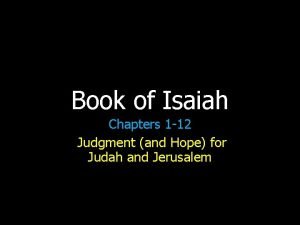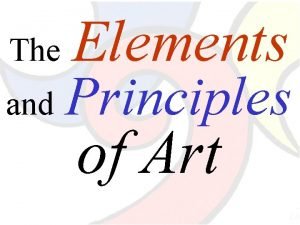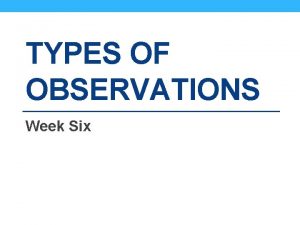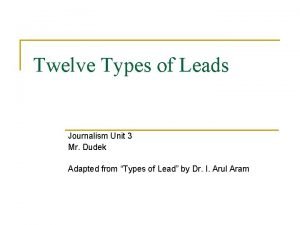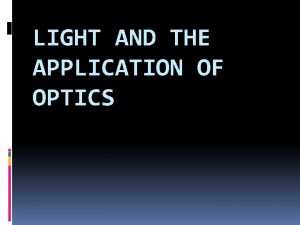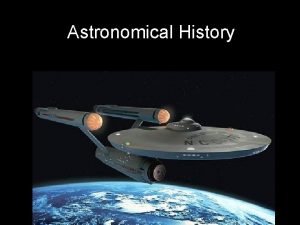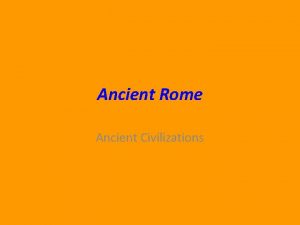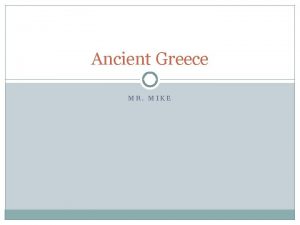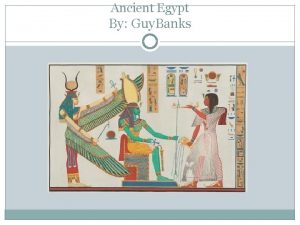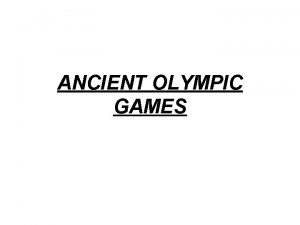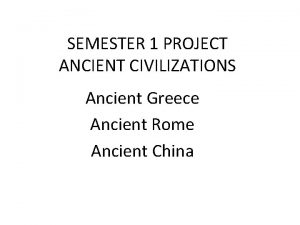OPTICS HIGHLIGHTS AN ANECDOTAL HISTORY OF OPTICS ANCIENT


















- Slides: 18

OPTICS HIGHLIGHTS AN ANECDOTAL HISTORY OF OPTICS

ANCIENT HISTORY • ancient Greece – beginning of the history of optics and optical devices • Aristophanes - reflection of the sun’s rays • Democritus and Aristotele - nature of vision • the Emperor Nero - the first to use a monocle • Ptolemy - refractive effects of water and discussed the refractive effects of the atmosphere • Alhazan - the result of light coming from an object into the eye

SPECTACLES • China - adornment - magical powers - colored glass, not correcting lenses • Roger Bacon - the first recorded reference to the magnifying properties of lenses in 1262 • 1280 – first eyeglasses in Florence by Alessandro di Spina > thein use spread rapidly

. • 1604 - Johannes Kepler - a correct explanation of their operation • 1784 – Benjamin Franklin – bifocals - the two lens sections were held by the frame (1908 bifocals with the sections fused together) • 1827 - George Airy - introduced the use of a cylindrical lens • 1636 - René Descartes - suggested and sketched contact lenses • 1887 - Adolf Fick - the first contact lenses to have been worn • 1948 - Kevin Tuohy - the plastic contact lens

THE TELESCOPE • 1608 - Hans Lippershey - the invention of the telescope • 1610 - Galileo Galilei - the telescopic observations of the moon and planets Opera-glass • Johannes Kepler - the form of the refracting telescope = the basis for modern refractors (it has a convex lens placed in back of the focus)

. • 1670 - Isaac Newton - invention and construction of the reflecting telescope • 1733 - Chester More Hall - resolved the problem of chromatic aberration for refractor telescope by a lens design – kept secret • 1759 - it was uncovered and used commercially by John Dolland his son • 1930 - Bernhard Schmidt – his telescope serves astronomy as a wide angle camera

THE MICROSCOPE • end of the 16 th century or the beginning of the 17 th - ascribed to Hans Jansen • 1665 - Robert Hooke - replaced the eye piece with the twinlens telescope eyepiece - Hooke’s three-lens microscope is the basis for modern instruments

. • 1830 - Joseph Jackson Lister – lens design - resolved the problem of spherical aberration for microscopes • 1841 - Karl Friederich Gauss - general theory of lens design • during 1870 – 1888 - Ernst Abbé – eliminated many of the remaining limitations

RAY OPTICS, CORPUSCLES AND WAVES • 1621 - Willebrord Snell - discovery of the law of refraction • 1657 - Pierre de Fermat - "principle of least time„

. • 1672 – Isaac Newton - based his explanations of reflection and refraction on a corpuscular theory of light • 1827 -William Hamilton used this principle as a basis for a general mathematical theory of ray optics.

WAVE OPTICS • 1801 - Thomas Young - discovered the interference of light • 1808 - Etienne-Louis Malus – the polarization of light by reflection • 1811 - David Brewster - polarizing angle

. . • 1815 -Jean Fresnel -rediscovered interference and provided a mathematical theory of diffraction based on the wave theory

OPTICS, ELECTROMAGNETIC WAVES & QUANTA • 1873 - James Clerk Maxwell - his equations for the electromagnetic field described waves traveling at the velocity of light • 1818 - Joseph von Fraunhofer - absorption lines of the elements • 1886 - Hertz - electromagnetic waves were refracted and reflected like light waves.

. . • 1905 -Einstein- analysis of the photoelectric effect • 1928 - Niels Bohr -the development of quantum mechanics, and the principle of wave-particle duality of light and matter •

SOME ROOTS OF MODERN OPTICAL SYSTEMS • 1925 - John Logie Baird - the first optical data storage • 1948 - Denis Gabor - holography (3 D pictures)

. • 1873 – Abee - optical data processing • 1960 - construction of the first laser and the rapid development of optical communication systems, Principal components: 1. Active laser medium 2. Laser pumping energy 3. High reflector 4. Output coupler 5. Laser beam

That is all. Thank you for coming

. Language • • • remarkable: nápadný, nevšední (pozoruhodný), solve: rozluštit (kód), vyluštit (křížovku apod. ), explain: jasně se vyjádřit, podat výklad čeho, result: výsledek, důsledek, adornment: ozdoba, lem required: požadovaný, povinný (školní předmět), eyepiece: okulár velocity of wave front: postupivost vlny pressure wave: tlaková vlna comprehensive: celkový, obsáhlý, obsažný, spatial: prostorový storage: akumulace, uskladnění, hromadění, Reference http: //micro. magnet. fsu. edu - announce: ohlásit, - propose: klást za cíl - matter: hmota, látka - record: zápis - obtain: získat, dostat
 Difference between ray optics and wave optics
Difference between ray optics and wave optics Venn diagram of geometric optics and physical optics
Venn diagram of geometric optics and physical optics Features highlights
Features highlights Proposal highlights
Proposal highlights Highlights memorandum
Highlights memorandum Investment highlights
Investment highlights Highlights from the book of isaiah
Highlights from the book of isaiah Highlights from the book of isaiah
Highlights from the book of isaiah Shs work immersion portfolio sample
Shs work immersion portfolio sample The passage highlights……
The passage highlights…… Elements and principles of art
Elements and principles of art Ancient communication devices
Ancient communication devices Ancient india vs ancient china
Ancient india vs ancient china Running record observation samples
Running record observation samples Anecdotal lead journalism
Anecdotal lead journalism Anecdotal records in nursing examples
Anecdotal records in nursing examples Anecdotal example
Anecdotal example Anecdotal lead examples
Anecdotal lead examples A hook statement
A hook statement







